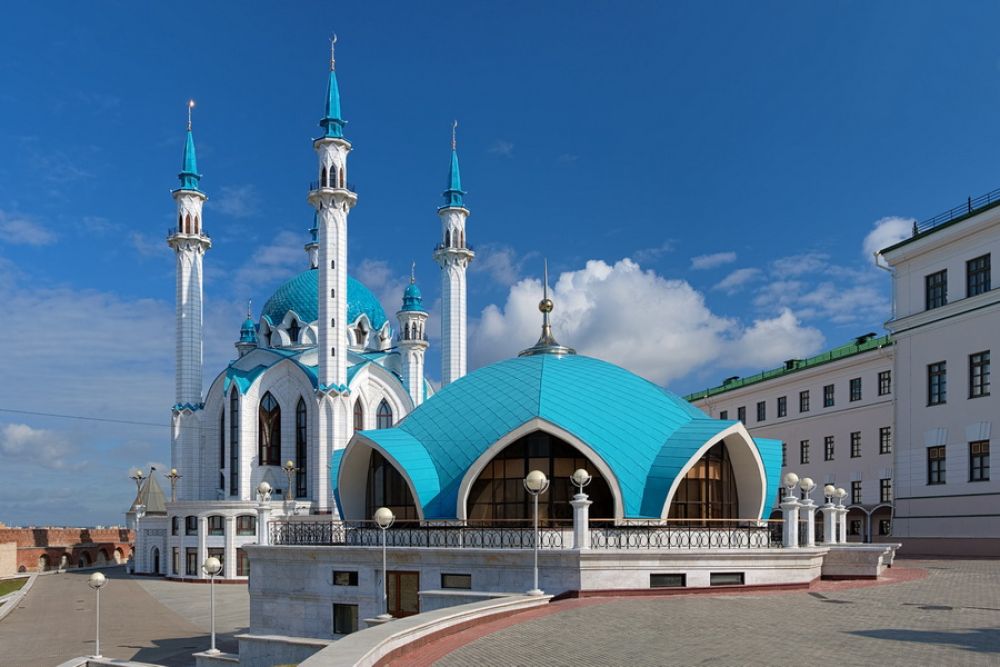

The Kul Sharif Mosque, located in the heart of Kazan within the renowned Kremlin walls, is not only a significant religious site but also a striking symbol of Tatar culture and history. It stands as one of the most important mosques in Russia and as a testament to the Islamic heritage of the Tatarstan Republic.
The original Kul Sharif Mosque dates back to the 16th century and was reputed to be one of the largest mosques in Europe and an embodiment of the city’s then-prosperous Khanate of Kazan. The mosque was named after Kul Sharif, who was a religious scholar and the imam of the mosque. Sadly, during the siege of Kazan by Ivan the Terrible in 1552, the mosque was destroyed, along with much of the city.
The idea of rebuilding the mosque was conceived during Tatarstan's post-Soviet revival of national identity. The reconstruction project began in the 1990s as a symbol of the Tatar people's heritage and resilience, culminating in its inauguration in 2005 as part of Kazan's millennium celebrations.
Kazan has long been a melting pot of Eastern and Western cultures, with tourism steadily growing post the collapse of the Soviet Union. Since the reopening of the Kul Sharif Mosque, it has been pivotal in attracting tourists, both for its historical resonance and architectural grandeur. The mosque, with its sky-blue domes, now serves not only as a place of worship but also as a museum of Islam and a tourist attraction that demonstrates the peaceful coexistence of different religions and cultures in Kazan.
Visitors to the Kul Sharif Mosque are welcomed by its impressive façade, which is especially striking against the Kremlin's historical backdrop. Inside, tourists can explore the Islamic cultural center which offers insights into the Islamic civilization of the Volga region. The mosque’s interiors are adorned with intricate designs and calligraphy, evoking a sense of peace and spiritual upliftment.
In recent years, cultural tourism has become a primary trend in Kazan, with Kul Sharif Mosque at the center. Tourists are drawn to the mosque not only for religious purposes but also to delve into the rich tapestry of Tatarstan's history. Furthermore, the city of Kazan has been actively working on developing infrastructure and services for tourism, promoting multicultural events, and leveraging digital technologies to enhance tourist experiences.
Virtual tours and online resources have also been made available, enabling potential visitors to explore the mosque from afar. During the COVID-19 pandemic, digital engagement has become even more pivotal, hinting at the changing dynamics of tourism worldwide.
The ongoing popularity of the Kul Sharif Mosque as a tourist destination ensures that this historic landmark remains a living part of Kazan's cultural landscape. It continues to fascinate those interested in history, architecture, and spirituality and serves as a bridge between the past and the present, inviting people from all walks of life to experience the beauty and tranquility it offers.